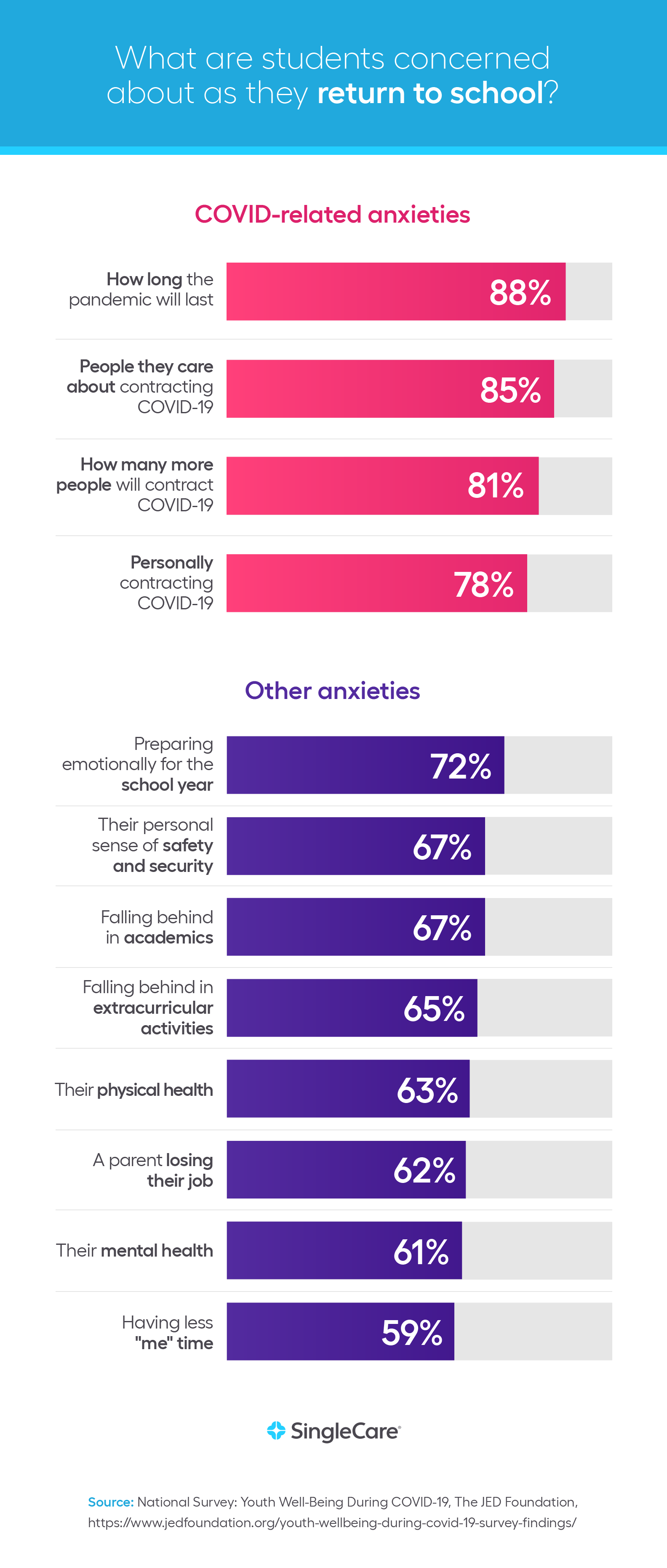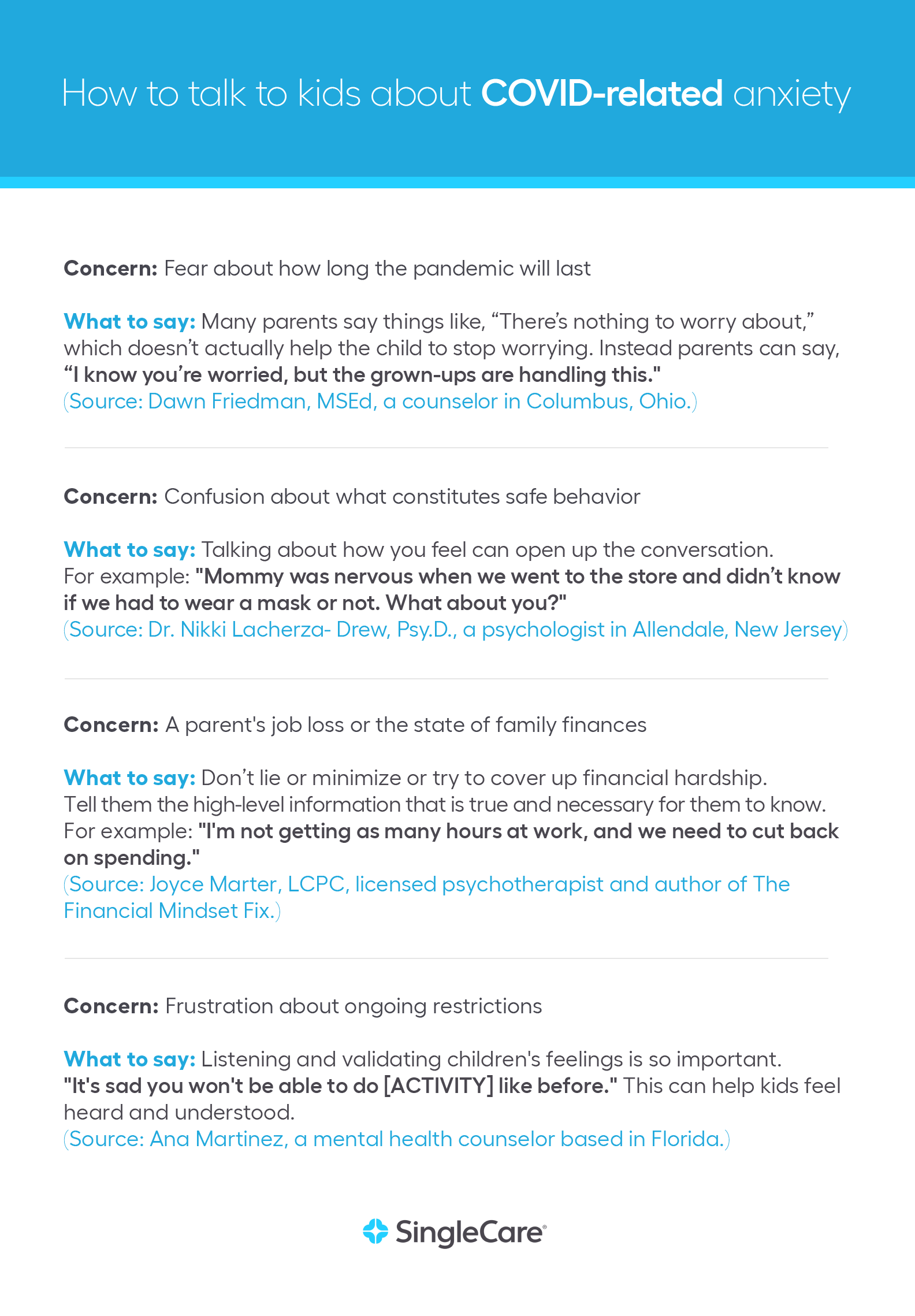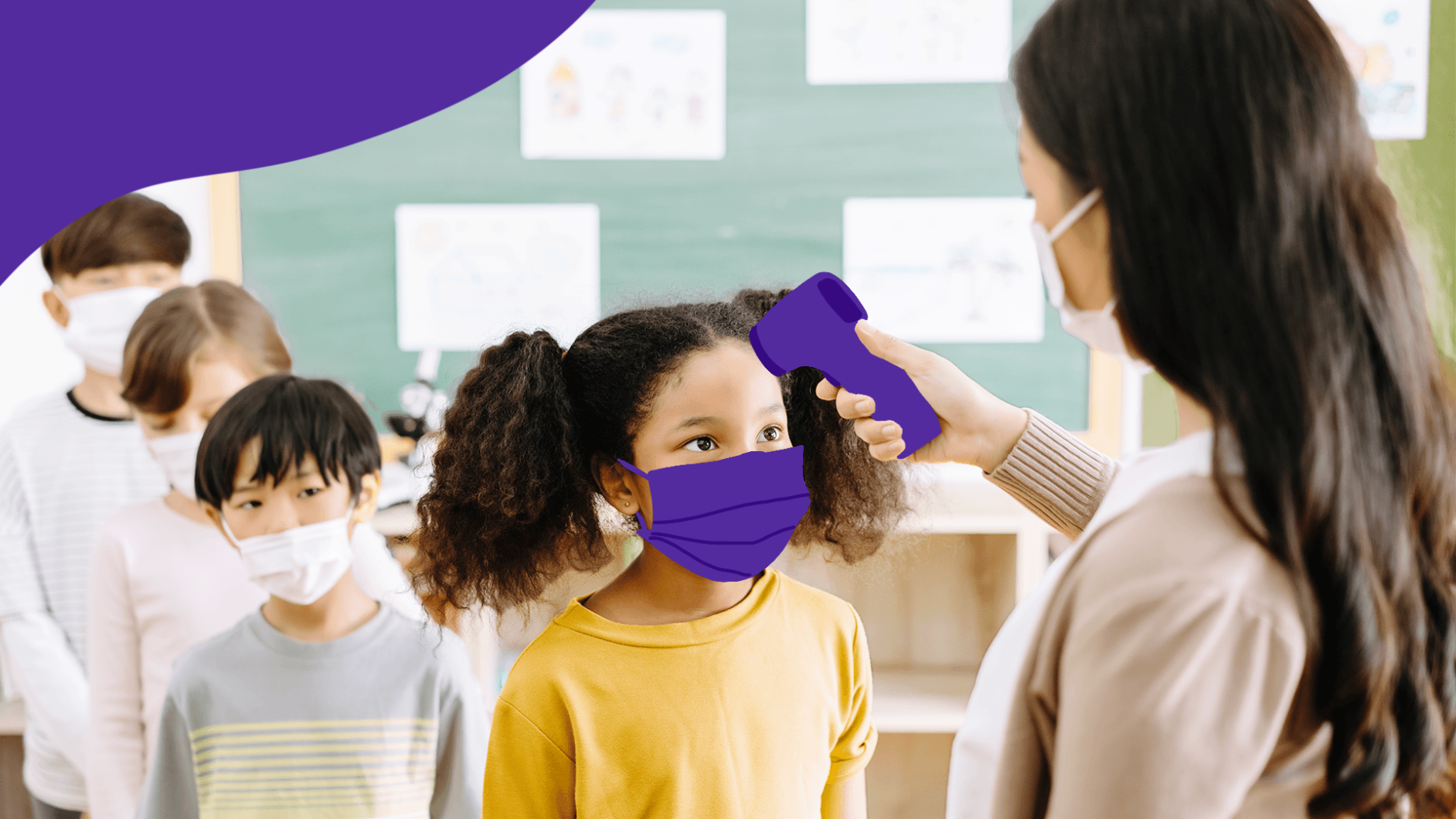According to the Centers for Disease Control, more than 40% of Americans reported that they were struggling with their mental health during the first wave of the pandemic. Young adults reported mental health struggles at an even higher rate. And children may be struggling most of all.
In a national survey of parents by the JED Foundation, 59% reported that their child was experiencing mental health challenges during the pandemic. And now, with children returning to school, another level of potential anxiety may be added. In the JED Foundation survey, 72% of teens aged 13-18 reported concern about preparing emotionally for the school year.
“For children who spent last year at home or in hybrid learning, the usual back-to-school jitters may be exacerbated,” says Dawn Friedman, MSEd, a counselor in Columbus, Ohio. “Adjusting to new expectations may be difficult.”
Why is COVID-related anxiety worse for children and teens?
According to the psychologists, counselors, and other experts we spoke to, here’s why children may be experiencing even higher levels of anxiety than adults.
Confusion about COVID-related disagreements among adults
Children are confused because adults can’t seem to agree about mask-wearing, vaccines, and other critical facets of controlling the COVID-19 pandemic. Feelings of confusion could be intensified for kids who are returning to school.
“For kids who have mostly been surrounded by families who agree with the way their own family has managed the pandemic, meeting children who have handled it differently could be worrisome or upsetting,” Friedman says. “For example, a child who has been scrupulous about handwashing may be upset when a friend is less careful.”
Disruption of routines
The waves of infections, mandates, and closures pose a challenge to children. “The idea of a routine and normalcy has been completely taken away from these kids,” says Dr. Nikki Lacherza-Drew, Psy.D., a psychologist in Allendale, New Jersey. “Children have experienced constant changes that they are required to abide by, without any transition time.”
The state of family finances
Older kids, especially, may be aware of the possibility that the pandemic could threaten a family’s financial wellbeing. According to a JED Foundation survey, 62% of teens report concern about a parent losing their job.
“Kids are very perceptive and often recognize when their parents are stressed and worried, even when we try to protect them from our fears and concerns,” says Joyce Marter, LCPC, licensed psychotherapist and author of The Financial Mindset Fix.
Lack of experience with change
“Just like adults miss the world as it used to be, kids feel even more overwhelmed by this
loss,” says Carole Lieberman, MD, a psychiatrist and best-selling author. “Most don’t have the experience of going through such challenging times and coming out the other end, so they
are stuck feeling sad.”
What types of COVID-related anxiety are kids experiencing?
The JED Foundation asked teens aged 13-18 about their concerns related to the pandemic. The most common concerns centered around the length of the pandemic, infections that might affect them, and preparing for the new school year.

- 88% reported concern about how long the pandemic will last
- 85% reported concern about people they cared about contracting COVID-19
- 81% reported concern about how many more people will contract COVID-19
- 78% reported concern about personally contracting COVID-19
- 72% reported concern about preparing emotionally for the school year
Other concerns reported by teens included:
- Their personal sense of safety and security (67%)
- Falling behind in academics (67%)
- Falling behind in extracurricular activities (65%)
- Their physical health (63%)
- A parent losing their job (62%)
- Their mental health (61%)
- Having less “me” time (59%)
Coping with back-to-school anxiety during COVID-19
When it comes to preventing COVID anxiety among your children, preparation is vital.
“Inform yourself about your school district’s COVID policies and share them with your children,” recommends Steven Rosenberg, Ph.D., a psychotherapist and behavioral specialist in suburban Philadelphia. “Knowing what the school district plans to do will help kids to cope since they’ll know what is expected of them.”
Dr. Rosenberg recommends being involved with all of these back-to-school activities, to help your child feel supported and comfortable.
- Shop for back-to-school supplies with your child.
- Start reintroducing their school nighttime routine and sleep schedule.
- If your child is involved in a sport or other activity, take advantage of opportunities to meet with the coach or faculty adviser and teammates before the season starts.
Part of your preparation might include acting out scenarios your child could encounter, based on the guidelines being followed at their school.
“If possible, role playing some of their fears can help,” says Ana Martinez, a mental health counselor based in Florida. “Preparation can include sharing the information and playing it out so that the child can experience it. The more practice they get at maintaining distance, wearing the mask, or whatever they’re struggling with, the more comfortable they’ll be.”
Of course, if your child is eligible for the COVID vaccine, getting them vaccinated may be the most important preparatory step you can take. You can confidently tell your child that the vaccine is safe and effective at preventing COVID-19, including hospitalization and death.
How to support children while returning to the classroom
Once children return to the classroom, continue the support that you’re giving to your child—this time, as new situations and challenges arise.
Provide validation and encouragement
Children need to hear that it’s okay to feel anxiety.
“Validate how scary and uncomfortable it is that plans need to change and things are different,” Dr. Lacherza-Drew says. “Let your child know that they are not the only ones experiencing these feelings.”
Encouraging children to share their feelings may take the form of asking questions or having children act out their feelings through play.
“I use a lot of colors to represent feelings—red for anger, blue for sadness—and stuffed animals to show how I am feeling or to ask how the child is feeling,” Dr. Lacherza-Drew explains. “Talking about how you feel can open up the conversation.”
Practice patience and a positive attitude
Children are impatient by nature and may need help remembering that COVID restrictions won’t go on forever. “Remind your child that this will pass,” Dr. Rosenberg says.
At the same time, continued restrictions—or new ones—may cause children to get frustrated. The best solution is to help children shift their mindset.
“Remind them to focus on what they can do, not what they can’t do,” Dr. Rosenberg advises. “Try to get them to stay focused on the positive changes,”
Emphasize safety measures and precautions
Throughout the school year, new safety measures may be introduced. Others may go away. Both situations could lead to anxious feelings.
“Parents should normalize that these are changes for everyone and that some situations might be more scary than others,” Martinez said. This is an opportunity for parents to model both good citizenship and good coping behavior.
“Parents can recognize concerns that might be age-appropriate and demonstrate how they can deal with them,” Martinez said. “If children see parents taking a deep breath when under stress and abiding by regulations,dd then they will be more likely to do so as well.”
Establish a consistent routine
With so much uncertainty surrounding COVID, routine is more important than ever. Sleep routines are especially important—adequate sleep is one of the best ways to improve and protect our mental health.
Involvement in extracurricular activities will provide structure outside of school hours. Routines at family mealtime can include opportunities to talk about how children are feeling as they return dto school.
One thing that the experts we talked to agreed on: Don’t make news and social media consumption part of your child’s routine.
“It is important to consider that things that seem small to adults can feel really big to children,” says Kristen Eccleston, Ed.D., a teacher and consultant at Weinfeld Education Group. “Some children overhear things on the news about hospitals and death and may automatically assume that the contraction of COVID would cause them to end up in the hospital.”
Talking to children about COVID-related anxiety
We asked experts how they would handle some of the most common fears related to the pandemic.

Concern: Fear about how long the pandemic will last
What to say: Many parents say things like, “There’s nothing to worry about,” which doesn’t actually help the child stop worrying. Instead parents can say, “I know you’re worried, but the grown-ups are handling this.” (Dr. Friedman)
Concern: Confusion about what constitutes safe behavior
What to say: Talking about how you feel can open up the conversation. For example: “Mommy was nervous when we went to the store and didn’t know if we had to wear a mask or not. What about you?” (Dr. Lacherza-Drew)
Concern: A parent’s job loss or the state of family finances
What to say: Don’t lie or minimize or try to cover up financial hardship. Tell them the high-level information that is true and necessary for them to know. For example: “I’m not getting as many hours at work, and we need to cut back on spending.” (Marter)
Concern: Frustration about ongoing restrictions
What to say: Listening and validating children’s feelings is so important. “It’s sad you won’t be able to do [ACTIVITY] like before.” This can help kids feel heard and understood. (Martinez)
For younger children, conversation may not be the best form of communication. “Sometimes kids haven’t developed the vocabulary to express their feelings,” Martinez says. “Art and play can be their way of communicating.” She suggests having younger children “play” a day at school using their stuffed animals or asking them to draw what a day looks like at school.
Talk, observe, and, if necessary, take action
Having open conversations can help your child cope and help you determine whether their anxiety is changing. “Anxiety can look different from child to child,” Dr. Eccleston explains. “The most important point is to be observant and look for any significant changes that you recognize may be impacting your child’s overall wellbeing.”
And if you do notice changes? “Consider outside help if your child’s anxiety begins to impact their day-to-day well-being,” said Dr. Eccleston. “Reaching out to a counselor or therapist is a great way to provide your child with an additional level of support that can help reduce their anxiety.”
Additional resources
- Vaccine effectiveness, CDC
- Teaching kids about germs before going back to school, SingleCare
- How to deal with back-to-school stress, SingleCare
- Does your child need a mental health day from school?, SingleCare
- Coronavirus Information Hub, SingleCare
- Parenting teens with ADHD during a pandemic: How we found a new normal, SingleCare
- Back to school resources for families and educators, Child Mind Institute
- Returning to learning: Our next COVID challenge (webinar), Weinfeld Education Group











